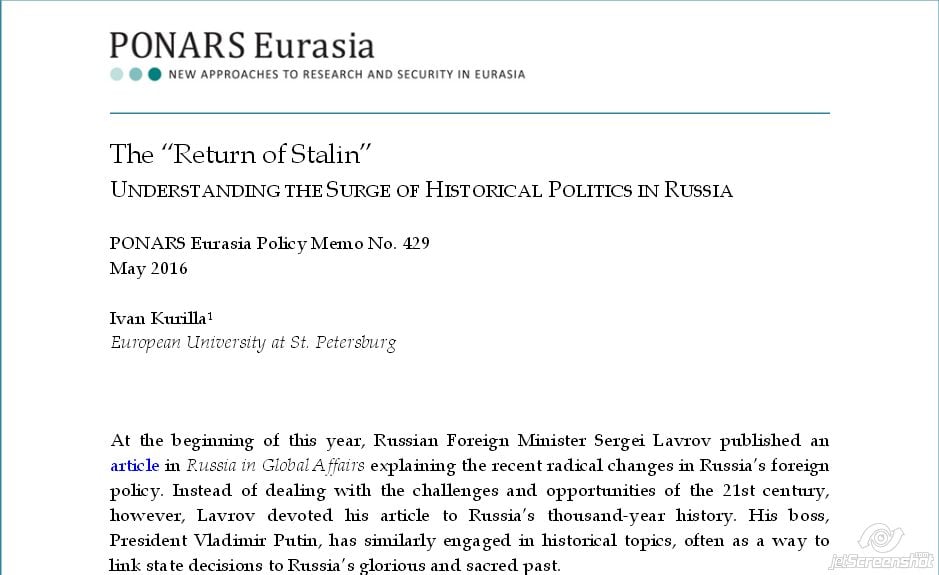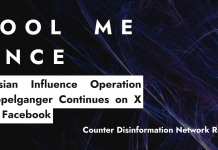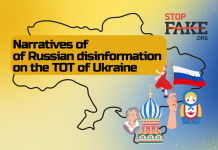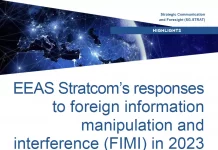(PONARS Eurasia Policy Memo) At the beginning of this year, Russian Foreign Minister Sergei Lavrov published an article in Russia in Global Affairs explaining the recent radical changes in Russia’s foreign policy. Instead of dealing with the challenges and opportunities of the 21st century, however, Lavrov devoted his article to Russia’s thousand-year history. His boss, President Vladimir Putin, has similarly engaged in historical discussion, often as a way to link state decisions to Russia’s glorious and sacred past.
Russia’s “historical language of politics” kicked into high gear during the Ukraine conflict. In 2014, the Kremlin introduced various historical narratives as a way to mobilize support. Many of its ideas proliferated and took on a logic of their own, even to the point of becoming uncontrollable trends. This political dabbling in history has made the lives of professional academic historians complicated, even hazardous.
In a sign that the government may be attempting to tone down the current bout of historical politics, a dormant government bill seeking to safeguard the memorializing of those who experienced political repression was recently signed into law. The primary intent of the legislation appears to be tamping down on the latest historical trend—the return of Joseph Stalin to Russia’s pantheon of heroes.
Pushing the Right Buttons
Accompanying changes in Russia’s mode of governance from 2012-2014, state propaganda began to disseminate a wide range of historical narratives to justify Kremlin decisionmaking and to secure public support. Within a short period of time, the government introduced a series of historical novelties into public discourse. In addition to a law against rehabilitating Nazism, the state evoked the memory of medieval Prince Vladimir (the baptizer of Rus’), commemorated the beginning of World War I, and staged a massive jubilee for the 70th anniversary of the Soviet Union’s victory in World War II. In 2015, such appeals to history were overshadowed by the return of Joseph Stalin to the public space through the establishment of monuments and the renaming of streets. These efforts attracted significant national attention, though they were not sparked (or overtly welcome) by the Kremlin.
Objective historical research was first imperiled in April 2014 when the Duma approved an amendment to the Criminal Code characterizing the “Rehabilitation of Nazism” as a felony. This made it dangerous for academics to question any aspect of the official version of World War II. Over the previous decade, the Russian government had already used World War II (the “Great Patriotic War”) to unify state and society. The collective memory of suffering and victory in that war forms an important part of Russian national identity. Almost all Russian families share memories of that time in which more than 27 million citizens perished. The war’s unifying power explains why the government has tried hard to keep historical interpretations of this period under their control. The law against rehabilitating Nazism appeared to mark the endpoint of the development of a canon for studying and retelling the events of the war.
As the Euromaidan drew to a close and unrest in Ukraine’s east grew, the memory of World War II took on new political significance. Russian propaganda began to heavily use analogies from the war to describe the situation in Ukraine. The Kremlin labeled Ukraine’s nationalist political factions and the new Kyiv leadership as “Nazis.” The Ukrainian military that was attempting to restore control over insurgents became known as karateli (“punishers”), after the German commandos of 1941-43 who pursued guerilla fighters by destroying villages and killing civilians. Pro-Russian rebels were referred to as opolchentsi (“militia”), after the Russian civilian volunteers who defended Moscow in 1941. The Kremlin’s messaging used the strongest political language possible and more broadly than ever.
However, the Kremlin overused World War II in its propaganda and it began to lose value as a domestic policy instrument. The “instrumentalization” of history began to dilute the precious symbols of Russia’s wartime memories. As the most tense phase of the Ukraine conflict died down, the Kremlin had to change its propagandistic language. It turned to earlier historical events to find new supporting frames for its policies.
Unexpectedly, one such era was World War I. In August 2014, Putin delivered a speech dedicating a monument to the heroes of World War I. In it, he went beyond invoking heroism and memory. Putin spoke about Russia’s “stolen victory” by those who had “called for the defeat of the Fatherland,” been “eager for power,” and “betray[ed] the national interest.” Putin characteristically did not call the Bolsheviks by their name, probably in order not to anger current-day Communists who are generally loyal to his policies. Instead, Putin’s target was the liberal opposition camp. He thus laid the framework for using even World War I as a context for marginalizing opposition to Kremlin policies.
One Perspective?
In 2013, Putin instructed Russian historians to write a unified textbook of Russian history. Among the reasons for this was the wide variance in regional historiographies both from each other and from the national narrative. A year later the government instructed historians at the Institute of Russian History of the Russian Academy of Sciences to write new, separate histories of Novorossiya and Crimea. This added additional challenges to the already considerable task of producing a unified account of Russian history. Intriguingly, in April 2016, Institute director Yuri Petrov mentioned that the Institute was continuing its work on the history of Crimea but was silent about Novorossiya.
Even before historians offered their new text, Putin, in the fall of 2014, began unlocking more historical moments. He reached back over a millennium to locate another argument for the acquisition of Crimea. In a meeting with young historians, he said:
“Crimea for Russians…has a certain sacred significance. After all, in Crimea, in Chersonesus, Prince Vladimir was baptized, and then he baptized Rus’. The very first baptismal font of Russia is there.”
After these words were spoken, medieval Prince Vladimir became a new object in the nation’s historical discourse. The traditional view linking the baptism of Rus’ to Kyiv faded. Soon it became known that a monument to Prince Vladimir would be erected in Moscow, one bigger than the one in Kyiv. By the middle of 2015, a public debate about where to place the statue dominated headlines. All the suggested locations were symbolically charged: Lubyanka Square, across from the former KGB headquarters; Bolotnaya Square, the center of the 2011 winter protests; or Borovitskaya Square, just across from the Kremlin gate used by the presidential motorcade. Russian journalist Oleg Kashin suggested that the proponents of the monument meant to dedicate it to “another Vladimir” (not the prince but the president). The whole discussion attracted so much controversy that the idea was abandoned by the end of the summer on the grounds that it was impossible to find a place in Moscow for such an enormous statue.
Stalin Reemerges
Since his “Sacred Chersonesus” speech in late 2014, Putin has not introduced anything really novel into the field of historical politics. Even during last year’s Victory Day celebrations, which included a massive grassroots “Immortal Regiment” march, nothing new was officially said about the war or the past in general.[1]
However, mid-level bureaucrats and parliamentary deputies (mostly Communists) have taken an interest in crafting “official” histories. In particular, they have introduced a range of initiatives seeking to restore Stalin’s name to Russia’s pantheon of heroes. In February 2015, parliamentary chairman Sergey Naryshkin attended a ceremony in Yalta (Crimea) devoted to the anniversary of the meeting of Franklin Delano Roosevelt, Winston Churchill, and Joseph Stalin. The event featured the unveiling of a monument to the “Big Three” by famous sculptor Zurab Tsereteli that included a larger-than-life sculpture of Stalin. This was the first official Russian memorial of Stalin since the beginning of Nikita Khrushchev’s de-Stalinization in 1961.
After the statue’s inauguration, images of Stalin began to appear in different parts of the country and in various contexts. Alexander Prokhanov’s patriotic Izborsky Club brought an “icon” of Stalin to a ceremony at the Engels Air Force Base in Saratov in June 2015. The Lipetsk Communist Party erected a statue of Stalin in their city in April. Similar plans were announced in multiple cities and towns, from Ussuriysk in the Far East to Orel in central Russia and Dagestanskie Ogni in the Caucasus, where a Stalin Avenue already exists. In July, a bust of Stalin was placed in the Tver region in an exhibition at the Kalinin Front memorial museum, a move supported by Minister of Culture Vladimir Medinsky.
Another controversial figure reared his head when the Communist Party suggested a referendum last summer to return to Lubyanka Square the infamous monument of Felix Dzerzhinsky, the head of the Cheka (the KGB’s precursor). The motion was approved by the City Council (which is not at all Communist-controlled).
The rapid return of Stalin demonstrates a perception, at least among Communist ideologues and mid-level bureaucrats, that the historical narratives officially promoted by the state are obsolete and not in line with actual state policy.
There remains no clear official Kremlin position on the Stalin issue. Putin has repeatedly denounced Stalin and refused ideas that immortalize his name. All the state-sponsored history textbooks, including the “historical standard” laid down for the unified textbook, contain references to “Stalin’s dictatorship,” “cult of personality,” “mass repressions,” and “great power ambitions.” It is hard to imagine Putin reversing this position after 15 years of reinforcing it.
There are several possible explanations for Stalin’s reemergence. One may be as “trial balloons” that the Kremlin can use to gauge the public’s readiness to reassess national history in radical fashion—for instance using the 1930s as a key reference point rather than the 1970s.
Second, it may serve as a rhetorical ploy to scare Russian liberals and the West. The Kremlin can then shut down Stalin’s return in a move to assert itself as the voice of moderation and reason. For example, the debate about the Dzerzhinsky monument in Lubyanka Square might suddenly be resolved by the Kremlin, perhaps by deciding to place Prince Vladimir there instead.
Third, the use of history may be a way to justify the radical change in Russian foreign policy in 2014. This change required a clear explanation at all levels of the state apparatus. The Kremlin needed to provide something intelligible, and rampant Nazis in Ukraine and new revelations about Prince Vladimir were not working. The nearest historical period when Russia increased its territory was the Stalin era. In this light, it makes sense to see the return of Stalin as a result of Russian policymakers’ search for political language to explain the annexation of Crimea and, potentially, justify future ones.
With some degree of historical irony, however, the most compelling narrative may be that which Putin himself has publicly least supported: Stalin’s restoration of the Russian empire, in the form of the Soviet Union and in opposition to the external world. Sensing this narrative’s appeal, many elites may have taken it further than the state was ready to go. This produced an avalanche effect that threatened to escape the Kremlin’s control—probably the first time this has happened during Putin’s administration.
Perhaps as a way to re-claim its grip on historical politics, the Russian government re-introduced a bill in August 2015 on the “Perpetuation of the Memory of the Victims of Political Repressions.” This bill was prepared several years ago but was abandoned. Its reappearance and its signing into law in March 2016 may be taken as a sign that Russia’s leadership became unhappy with Stalin’s ever more prominent return to public life and wanted to tone down such initiatives.
Conclusion
Historical politics in Russia has entered a turbulent stage in the past few years. Two principal and emotional points of history have again been placed on the national stage: the Great Patriotic War (a unifying memory) and the era of Joseph Stalin (a point of contention). There is still no real clarity among Russians about these or other pivotal times in Russian history.
For Russians, history has substituted for the language of politics. It is rare to hear descriptions of political ideologies and events using accepted terminology. Words such as “democracy,” “liberal,” “elections,” and “annexation” have meanings that are abstract or in opposition to how they are understood in the West. To communicate one’s political outlook or understand that of others, it is simpler to examine attitudes toward Stalin, the dissolution of the Soviet Union, or the 1990s decline.
The next opportunity to assess Russia’s historical politics will be next year, 2017, the 100th anniversary of the Russian Revolution. In a country overwhelmed by historical politics, the way this commemoration is handled by the authorities and perceived by the people will be revealing.
By Ivan Kurilla, PONARS Eurasia
Ivan Kurilla is Professor of History and International Relations at the European University at St. Petersburg.
[PDF]
[1] Participation in the “Immortal Regiment” in the May 9 celebrations this year was huge, which ignited a heated debate among the Russian intelligentsia; the reasons, however, merit separate discussion.





